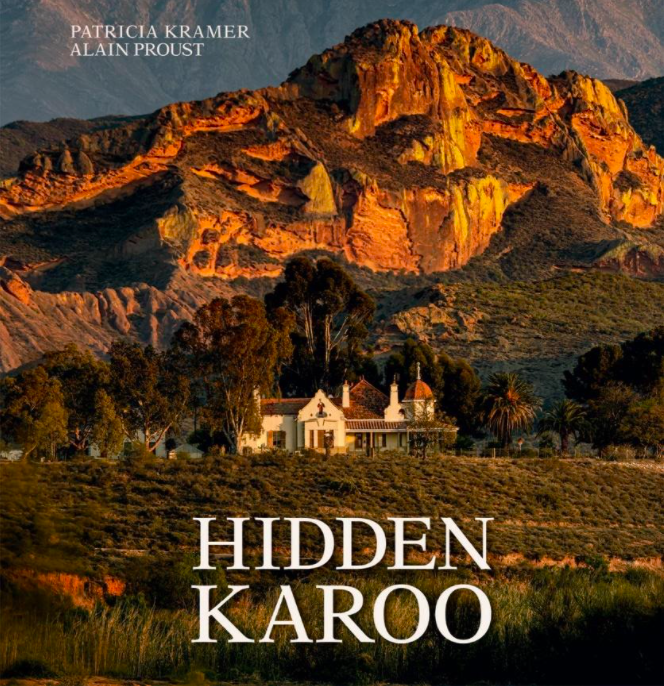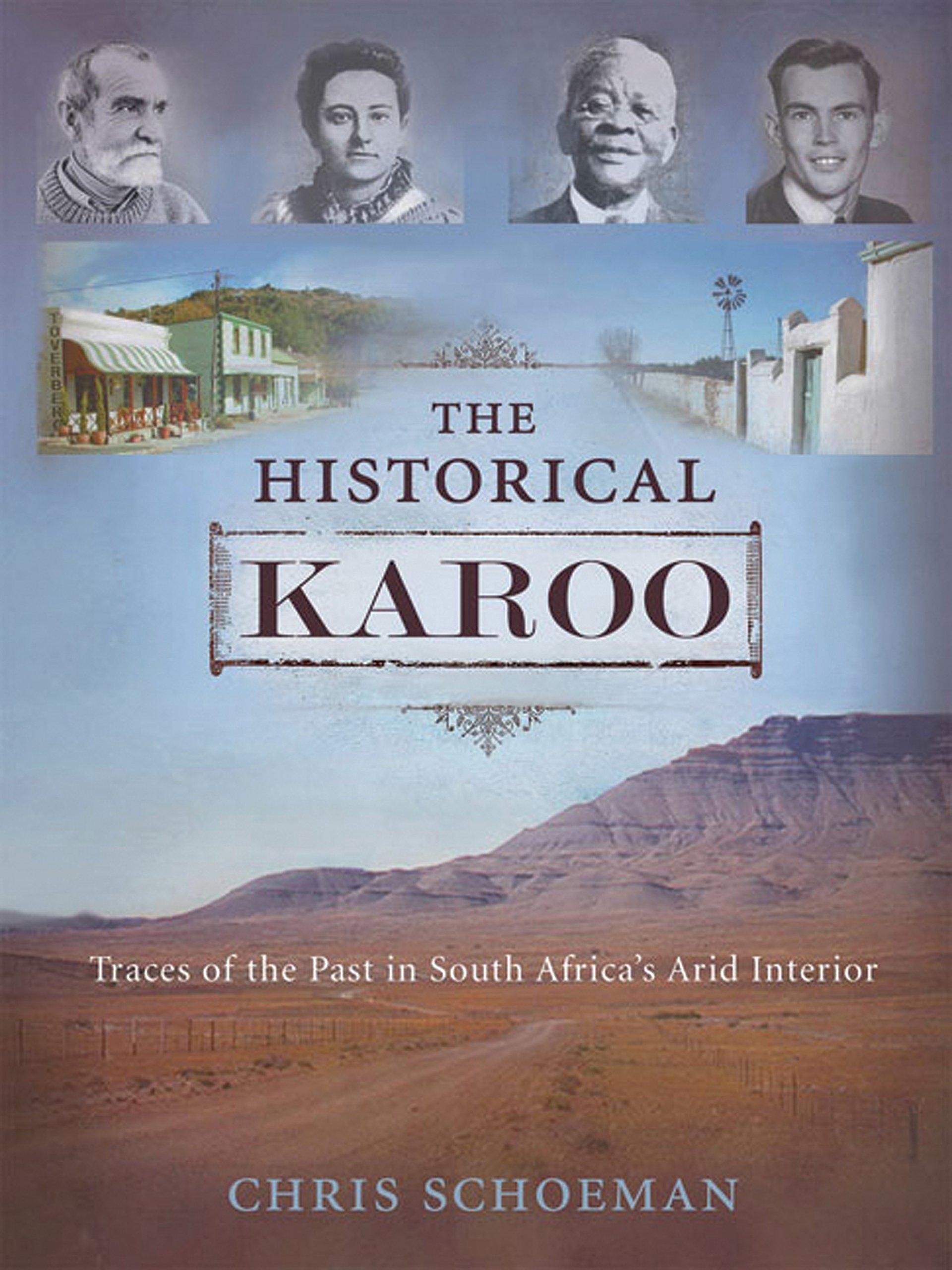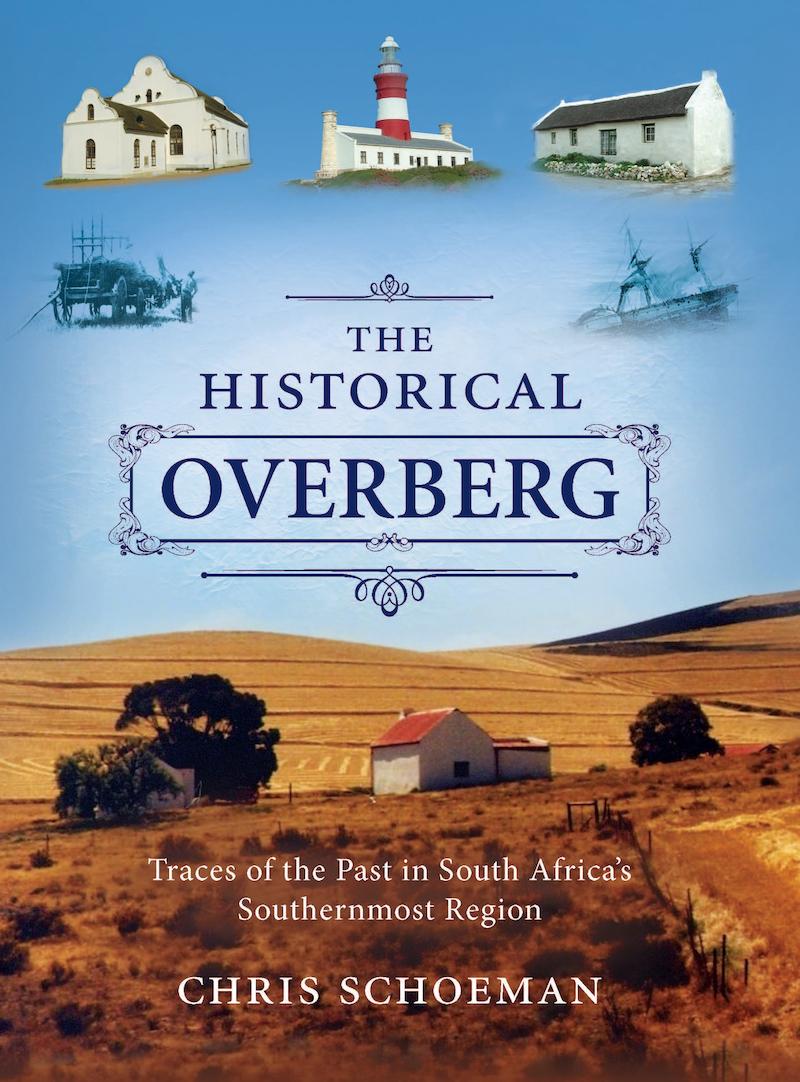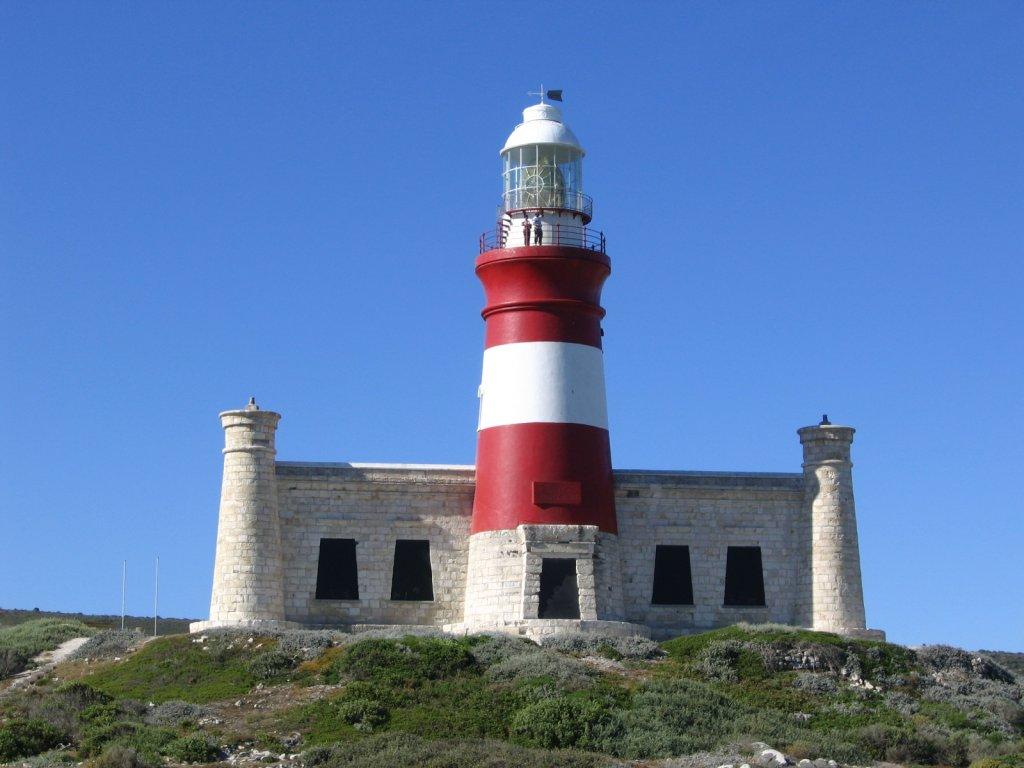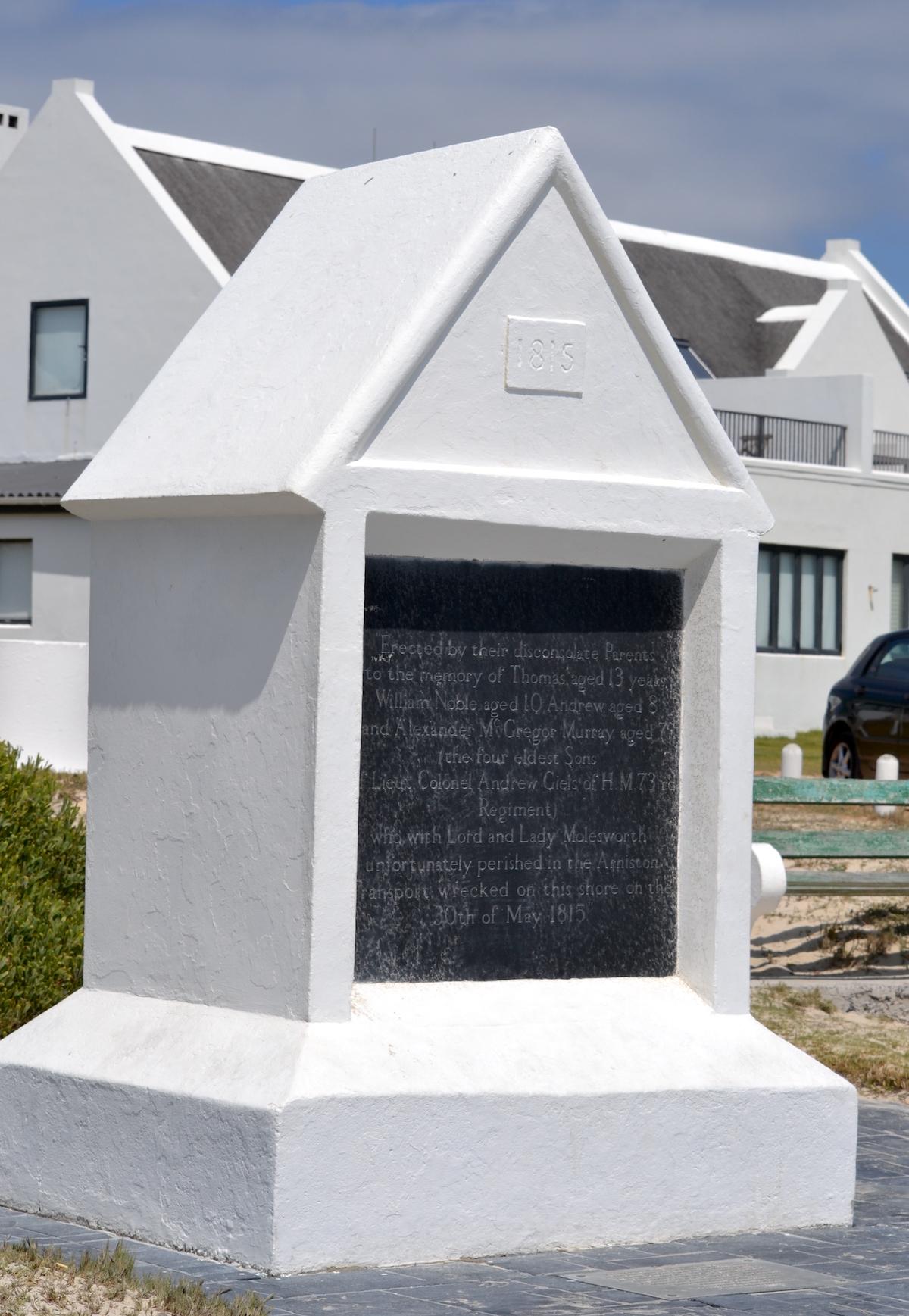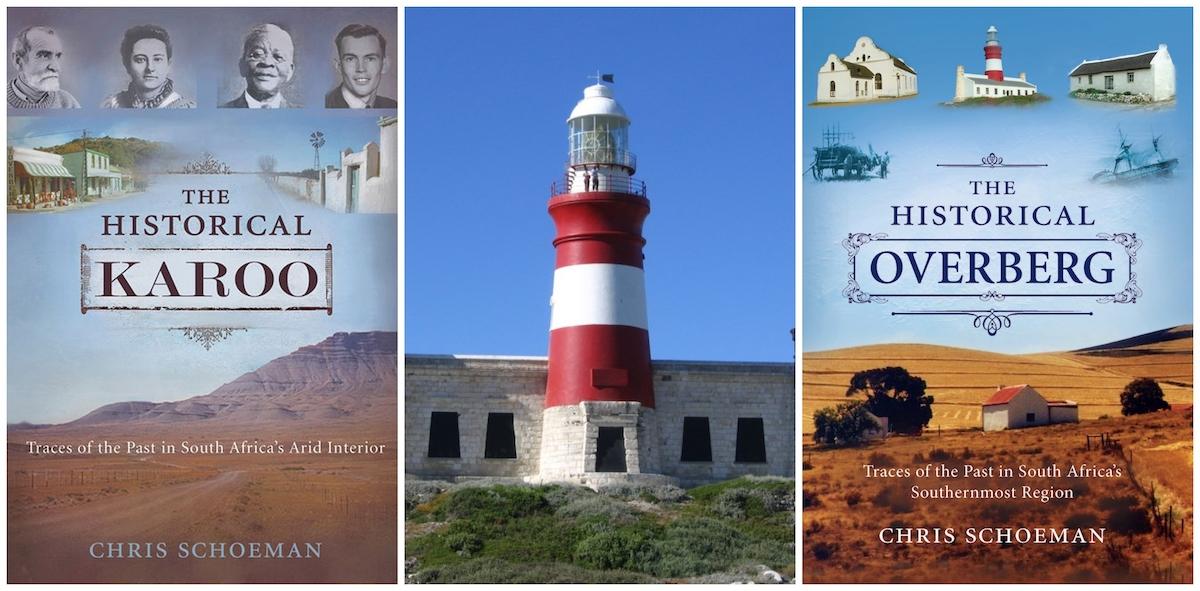
One good book often leads to another and another... My pleasure and delight on reviewing Hidden Karoo by Pat Kramer and Alain Proust, published in March 2021, led me to look around for other possible titles on the Karoo. I greedily fell upon the books by Chris Schoeman.
Hidden Karoo Book Cover
Chris Schoeman produced The Historical Karoo – Traces of the Past in South Africa’s Arid Interior in 2013 (Zebra Press). I found the book in my library and it is a double delight to dip into this book as a counter point to the Hidden Karoo. Sadly Historical Karoo is out of print (although reprinted in 2015).
The Historical Karoo Book Cover
Schoeman has also written the Historical Overberg, still currently in print (published by Zebra Press in association with Penguin Random House in 2017). I was then drawn to read and write about the two books as they are companion volumes.
The Historical Overberg Book Cover
These two books are far less lavish in photographic spreads than Hidden Karoo. They are uniform volumes and their strength lies in the historical coverage. They are highly readable and present some wonderful vintage photographs of the towns, events and architecture.
Chris Schoeman is a prolific writer in both English and Afrikaans. He has mined the rewarding seam of Anglo Boer War history and in both these books he includes plenty of Boer War characters and history. Boer General Wynand Malan was a son of Murraysburg, known as a rebel town - very anti-British despite being in deep Cape country; Malan was wounded and captured by the British but survived the war and continued to farm in the area. Less fortunate was Gideon Scheepers, who led a Boer Commando in 1901 and used guerrilla tactics to lay waste to much of the town; Scheepers’ story is told in the Graaff Reinet chapter because he was captured, tried for high treason and executed along with eight other rebels. Local feelings ran high at the time.
The Historical Karoo is an excellent travel guide with a focus not on the different regions of the Karoo but rather on the towns and people along or accessible to the N1 (as one traverses the vast expanse of the Karoo in an east to west or south to north direction). There are two or three pages on each of the 46 towns or villages offering a thumbnail sketch of the origins of the town or some fascinating snippets of the history and economics of the area.
Schoeman is the magpie type of historian looking for fascinating facts in every possible corner of the country. Why did people settle in the village of Klaarstroom? It is a small village at the foot of the Swartberg range at the beginning of the Meiringspoort pass. It lies to the east of Prince Albert. A farm was established there in 1763 called Klaare Stroom or Clear Stream. Crystal clear mountain water had an economic purpose. Karoo farmers came to wash their cargoes of wool in these mountain streams and the first wool washery was established here in 1874; it was designed by an architect, George Wallis who also designed the Anglican church in Klaarstroom in 1880 (his church buildings are also to be seen in other local towns). Then came a hotel, a police station and a court building. During the Boer War there were skirmishes; reminders of these war time encounters are a couple of war graves. A Dutch Reformed church was built in 1926. Nearby Meiringspoort pass is full of history - there is a path to a cliff crafted so the Prince of Wales, who must have passed through on his 1925 South African perambulation, could walk up to see a legendary mermaid in a deep pool. The much loved Afrikaans writer C J Langenhoven (author of the words of Die Stem) carved the name of his elephant, Herrie (from his book Sonde Met die Bure) on a rock on the pass.
Schoeman includes an inset on Langenhoven. South Africa’s first natural essential oils were extracted by a Dane, Fredrick Nielsen who built a plant to process blossoms and citrus rinds. Peppermint, fennel, aniseed were cultivated and processed for Cape Town pharmacists. In a few pages one quickly understands the relationship between a settlement, a farm, the church and a small industry, local government and the literature of the country. This is the warp and weft of old colonial South Africa and the story of white settlement. Each chapter covers a different town.
An introductory chapter sketches the early history of the Karoo. The coverage of the architecture of churches, synagogues and magistrates buildings, the people, the Boer War experiences, the graves and the travellers to the interior shows careful research and the nose to find the curiosities of local lore. Meet the men and women who either came from the Karoo or settled here - Olive Schreiner, the Molteno family, Athol Fugard, Chris Barnard, Paul Kruger and John X Merriman are all larger than life characters whose lives and significance are covered in brief boxed panels.
The book has a faux antique feel, with the old photographs touched up to a sepia tone and the pages shading to a tea stained fawn. The coloured photographs are cheerfully modern though modest in dimension. The paper is of a high quality and the size, shape and binding of the book make it a pleasure to handle. All round this is a quality production with source notes, a bibliography, clear maps and an index. This book is worth a shelf place in an Africana library, but as it is out of print it may be hard to find other than in a second hand book shop. Perhaps the success of Hidden Karoo will lead to the republication of The Historical Karoo; the two books complement one another.
The Historical Overberg is a companion volume to The Historical Karoo. Neatly bound and well presented, the style of production resembles the earlier volume. If you already own the Karoo book then it has to be on your ‘must purchase’ list. Fortunately, this book is still in print and available online.
The Overberg is also in the Cape, situated between the Hottentots Holland Mountains and the Breede River. The maps are beautifully drawn and are even better than the Karoo book and again the photographs are a mix of old sepia toned snapshots and beautifully styled coloured close up photographs of the botanical treasures of the area.
A book of this kind is a great way to painlessly absorb history, geography, architecture and ecology of this special part of the Cape. It’s a good book to take along on a holiday with thumbnail sketches of the small towns and villages found along the N2, towards the interior and along the coast. The approach is factual but also entertaining with a light touch.
Why was the region named Overberg? Because the Dutch named it “over the mountains”. In relation to Cape Town, these were the settlements created beyond the Hottentots Holland Mountains. These were the Cape mountainous regions taking the traveller up the plateau. Before the crafted roads of Thomas Bain these remote areas were difficult to access but were good for cattle grazing and later for more settled agriculture. Gradually settlements grew up around mission stations or on farms.
The author provides neat short sketches of towns such as Bot Rivier, Caledon, Riviersonderend and Swellendam along the N2. Venturing to the interior takes the traveller on to Villiersdorp, Greyton, Genadendal, Elim, Napier or Bredasdorp. There is romance and history in all these lovely sounding place names and Schoeman is an easy entertaining guide. Or you could try the coastal route from Rooi Els to Witsand. En route we encounter South African writers such as Stuart Cloete, Uys Krige, Jan Rabie or Marjorie Wallace or famous rugby players such as Pieter Kuypers Albertyn or learn about the founder of the cold storage industry in South Africa, Sir David de Villiers Graaff from Villiersdorp. The Cape Agulhas Lighthouse dates back to 1847 and was designed in a whimsical somewhat incongruous Egyptian style.
Cape Agulhas Lighthouse (Wikipedia)
Struisbaai, is a small coastal fishing village some 4 kilometres from Cape Agulhas with a beautiful small harbour and some fine romantic fishing cottages. Artists love the Kassiesbaai fishermen’s cottages at Arniston; in 1975 the entire town was declared a national monument and saved for posterity. Arniston was renamed (its original name was Waenhuiskrans) after a British East Indiaman, the Arniston, was wrecked on the rocks with the loss of over 370 passengers in 1815. The ship was lost because it lacked an essential item of navigational equipment, a chronometer, so that the captain could not calculate his longitudinal location and thought he was off St. Helena. A poignant memorial on the Arniston Beach still tugs at the heart strings - disconsolate parents, Andrew Giels and his wife, mourning the loss of their four young sons aged between 7 and 13 years in that wreck.
The Memorial (wikipedia)
Schoeman dips into history for his juicy stories of places and people. The photographs of the churches, the memorials, the wine estates, the coastal lagoons, the cottages and the lighthouses reveal a rich social texture and enough to inform and delight tourists and South Africans wanting to know more about their own country.
The weakness of both these books is that they say next to nothing about the indigenous people - and alternative local history. What really happened to the Khoi people is covered with a very light touch. What about the alternative communities and settlements in the coloured townships that one also sees at the edges of all these villages and towns? Schoeman writes non controversial history. Both books are histories of the white communities. Nonetheless each and every chapter entertains and enlightens. Both books will be accompanying me when I venture by car to the Northern and Western Cape. In a post-Covid world these are too attractive guidebooks to enhance travel.
Kathy Munro is an Honorary Associate Professor in the School of Architecture and Planning at the University of the Witwatersrand. She enjoyed a long career as an academic and in management at Wits University. She trained as an economic historian. She is an enthusiastic book person and has built her own somewhat eclectic book collection over 40 years. Her interests cover Africana, Johannesburg history, history, art history, travel, business and banking histories. She researches and writes on historical architecture and heritage matters. She is a member of the Board of the Johannesburg Heritage Foundation and is a docent at the Wits Arts Museum. She is currently working on a couple of projects on Johannesburg architects and is researching South African architects, war cemeteries and memorials. Kathy is a member of the online book community the Library thing and recommends this cataloging website and worldwide network as a book lover's haven.

